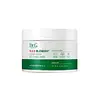What's inside
What's inside
 Key Ingredients
Key Ingredients

 Benefits
Benefits

 Concerns
Concerns

 Ingredients Side-by-side
Ingredients Side-by-side

Water
Skin ConditioningDipropylene Glycol
HumectantPropanediol
SolventNiacinamide
SmoothingGluconolactone
Skin Conditioning1,2-Hexanediol
Skin ConditioningPentylene Glycol
Skin ConditioningTromethamine
BufferingGlycerin
HumectantPanthenol
Skin ConditioningDipotassium Glycyrrhizate
HumectantAllantoin
Skin Conditioning3-O-Ethyl Ascorbic Acid
Skin ConditioningLactobionic Acid
BufferingGlyceryl Acrylate/Acrylic Acid Copolymer
HumectantDisodium EDTA
C12-13 Pareth-9
EmulsifyingPvm/Ma Copolymer
Emulsion StabilisingSalix Nigra Bark Extract
Skin ProtectingHamamelis Virginiana Leaf Extract
Skin ConditioningButylene Glycol
HumectantMethyl Diisopropyl Propionamide
MaskingBeta-Glucan
Skin ConditioningWater, Dipropylene Glycol, Propanediol, Niacinamide, Gluconolactone, 1,2-Hexanediol, Pentylene Glycol, Tromethamine, Glycerin, Panthenol, Dipotassium Glycyrrhizate, Allantoin, 3-O-Ethyl Ascorbic Acid, Lactobionic Acid, Glyceryl Acrylate/Acrylic Acid Copolymer, Disodium EDTA, C12-13 Pareth-9, Pvm/Ma Copolymer, Salix Nigra Bark Extract, Hamamelis Virginiana Leaf Extract, Butylene Glycol, Methyl Diisopropyl Propionamide, Beta-Glucan
Centella Asiatica Extract
CleansingDipropylene Glycol
HumectantGlycerin
HumectantHouttuynia Cordata Extract
Skin ConditioningAloe Ferox Leaf Extract
Skin ConditioningWater
Skin Conditioning1,2-Hexanediol
Skin ConditioningAllantoin
Skin ConditioningHexylene Glycol
EmulsifyingHydroxyacetophenone
AntioxidantXanthan Gum
EmulsifyingCarbomer
Emulsion StabilisingArginine
MaskingDipotassium Glycyrrhizate
HumectantDisodium EDTA
Aloe Barbadensis Leaf Extract
EmollientDioscorea Japonica Root Extract
Skin ConditioningUlmus Davidiana Root Extract
Skin ConditioningViola Mandshurica Flower Extract
AntioxidantLaminaria Japonica Extract
Skin ProtectingButylene Glycol
HumectantSodium Hyaluronate
HumectantHydrogenated Phosphatidylcholine
EmulsifyingCaprylic/Capric Triglyceride
MaskingSucrose Stearate
EmollientCetearyl Alcohol
EmollientAsiaticoside
AntioxidantAsiatic Acid
Skin ConditioningMadecassic Acid
Skin ConditioningMadecassoside
AntioxidantCentella Asiatica Extract, Dipropylene Glycol, Glycerin, Houttuynia Cordata Extract, Aloe Ferox Leaf Extract, Water, 1,2-Hexanediol, Allantoin, Hexylene Glycol, Hydroxyacetophenone, Xanthan Gum, Carbomer, Arginine, Dipotassium Glycyrrhizate, Disodium EDTA, Aloe Barbadensis Leaf Extract, Dioscorea Japonica Root Extract, Ulmus Davidiana Root Extract, Viola Mandshurica Flower Extract, Laminaria Japonica Extract, Butylene Glycol, Sodium Hyaluronate, Hydrogenated Phosphatidylcholine, Caprylic/Capric Triglyceride, Sucrose Stearate, Cetearyl Alcohol, Asiaticoside, Asiatic Acid, Madecassic Acid, Madecassoside
Ingredients Explained
These ingredients are found in both products.
Ingredients higher up in an ingredient list are typically present in a larger amount.
1,2-Hexanediol is a synthetic liquid and another multi-functional powerhouse.
It is a:
- Humectant, drawing moisture into the skin
- Emollient, helping to soften skin
- Solvent, dispersing and stabilizing formulas
- Preservative booster, enhancing the antimicrobial activity of other preservatives
Allantoin is a soothing ingredient known for its protective and moisturizingg properties. Because of this, it is often added to products with strong active ingredients.
Studies show higher concentrations of this ingredient can promote wound healing.
Though it can be derived from the comfrey plant, allantoin is produced synthetically for cosmetic products to ensure purity.
Learn more about AllantoinButylene Glycol (or BG) is used within cosmetic products for a few different reasons:
Overall, Butylene Glycol is a safe and well-rounded ingredient that works well with other ingredients.
Though this ingredient works well with most skin types, some people with sensitive skin may experience a reaction such as allergic rashes, closed comedones, or itchiness.
Learn more about Butylene GlycolDipotassium Glycyrrhizate comes from licorice root.
Extracts of licorice have demonstrated to have antibacterial, anti‐inflammatory, antiviral, antioxidant properties.
One component, glabridin, has extra potent antioxidant and soothing properties. It has also been found to block pigmentation from UVB rays in guinea pigs.
Licorice Root also contains a flavonoid. Flavonoids are a natural substance from in plants. Flavonoids also have antioxidant properties.
Another component, glycyrrhizin, has been found to have anti-inflammatory and antimicrobial benefits. This may make licorice root extract effective at treating acne. However, more research is needed to support this.
Liquiritin is one of the flavone compounds found in licorice. It has been found to help lighten skin by preventing tyrosinase from reacting with tyrosine. When the two react, protein is converted to melanin. Melanin is the substance in your body that gives your features pigmentation.
Licorice root is native to Southern Europe and Asia. It has been used in traditional Chinese medicine to help with respiratory issues.
Learn more about Dipotassium GlycyrrhizateDipropylene Glycol is a synthetically created humectant, stabilizer, and solvent.
This ingredient helps:
Dipropylene glycol is technically an alcohol, but it belongs to the glycol family (often considered part of the ‘good’ alcohols). This means it is hydrating and gentle on skin unlike drying solvent alcohols like denatured alcohol.
As a masking agent, Dipropylene Glycol can be used to cover the smell of other ingredients. However, it does not have a scent.
Studies show Dipropylene Glycol is considered safe to use in skincare.
Learn more about Dipropylene GlycolDisodium EDTA plays a role in making products more stable by aiding other preservatives.
It is a chelating agent, meaning it neutralizes metal ions that may be found in a product.
Disodium EDTA is a salt of edetic acid and is found to be safe in cosmetic ingredients.
Learn more about Disodium EDTAGlycerin is already naturally found in your skin. It helps moisturize and protect your skin.
A study from 2016 found glycerin to be more effective as a humectant than AHAs and hyaluronic acid.
As a humectant, it helps the skin stay hydrated by pulling moisture to your skin. The low molecular weight of glycerin allows it to pull moisture into the deeper layers of your skin.
Hydrated skin improves your skin barrier; Your skin barrier helps protect against irritants and bacteria.
Glycerin has also been found to have antimicrobial and antiviral properties. Due to these properties, glycerin is often used in wound and burn treatments.
In cosmetics, glycerin is usually derived from plants such as soybean or palm. However, it can also be sourced from animals, such as tallow or animal fat.
This ingredient is organic, colorless, odorless, and non-toxic.
Glycerin is the name for this ingredient in American English. British English uses Glycerol/Glycerine.
Learn more about GlycerinWater. It's the most common cosmetic ingredient of all. You'll usually see it at the top of ingredient lists, meaning that it makes up the largest part of the product.
So why is it so popular? Water most often acts as a solvent - this means that it helps dissolve other ingredients into the formulation.
You'll also recognize water as that liquid we all need to stay alive. If you see this, drink a glass of water. Stay hydrated!
Learn more about Water